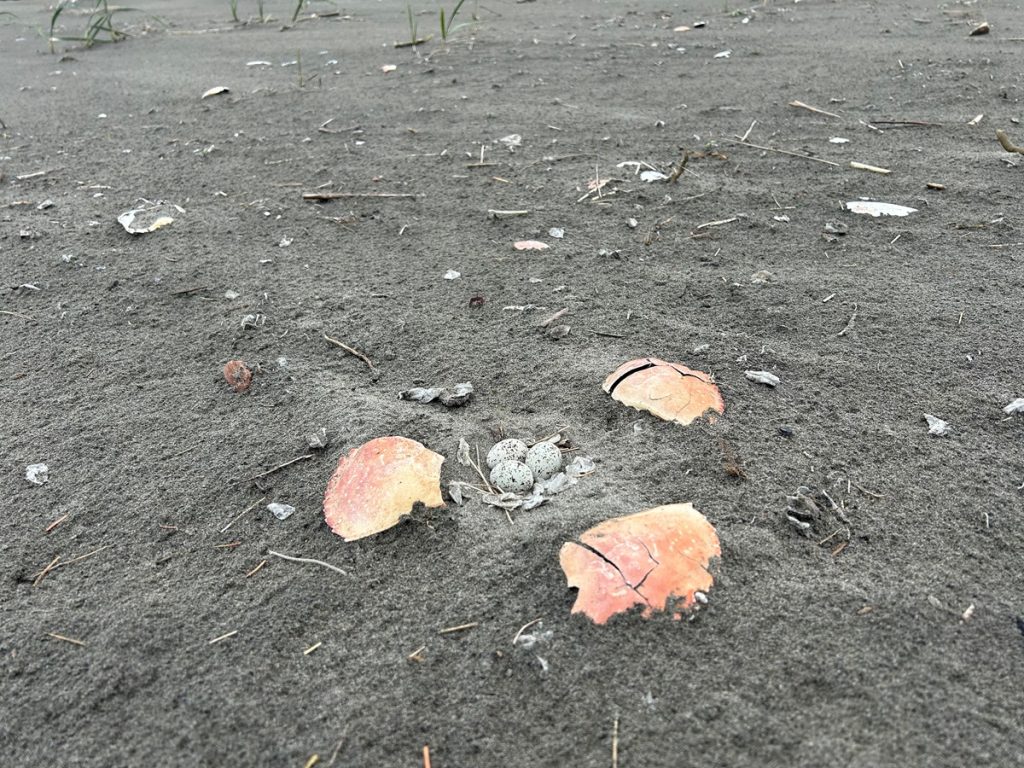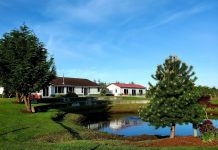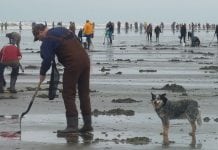Grays Harbor beaches are home to a cute resident that you may not have noticed. Weighing only two ounces as an adult with a sandy colored body just six inches in length, it’s easy to miss the western snowy plover. Their cute chicks can look like cotton balls on the sandy shores. Unfortunately, this Grays Harbor beach-dweller is also endangered. Washington Coast beach visitors can help save the snowy plover by following tips and guidelines from Washington State Parks and the Washington Department of Fish & Wildlife (WDFW).
“We have plover chicks on the beaches right now, along with eggs,” cautions Allison Anholt, the Washington Department of Fish and Wildlife shorebird species lead. “We’ve documented 44 nests in Grays Harbor County this year. The vast majority of our nest failures are attributed to predators (crows and ravens) who are attracted to trash left on the beaches. We’ve seen an uptick in failure after the 4th of July weekend. The nesting season will end around the end of August and fencing will come down on September 15.”

Predators, Invasive Grasses, Dogs and Beachgoers are Threats of Snowy Plovers
The snowy plover has been on the endangered species list since the 1980s. The tiny bird has many threats that have caused its population to dwindle, with habitat loss being the number one reason, according to Andrea Thorpe, Ph.D., Washington State Parks natural resources program manager. Snowy plovers make their nests in open sand so they can keep an eye out for predators. The tiny bird also struggles to navigate dense beachgrass. “Approximately 90% of their habitat has been lost across their breeding range due to the introduction of non-native European and American (an east-coast species) beachgrasses and the changes that these plants cause to the coastal dune ecosystems,” she adds.
Human visitors to Grays Harbor beaches unfortunately cause the other threats. Trash left on the beach attracts crows and ravens, which then prey on the nests of the snowy plovers. Pet dogs allowed off leash often destroy nests and chase off adults. Some may even attack chicks. People walking, driving and biking on the beach may unknowingly destroy nests or even harm birds. “Plovers place their nests in the sand and their eggs are extremely difficult to see,” cautions Thorpe. “Beach closures have been put in place to decrease the chances of people accidentally driving, riding bikes, or walking on nests, but unfortunately some disturbance still happens.”
Why Protect the Snowy Plover in Grays Harbor?
Although they are tiny, the snowy plover is an important part of the Washington Coast ecosystem. We all know that removing one species in an area can have a dire effect on other species, as they form a symbiotic loop. The snowy plover is no exception. In fact, Thorpe says they are a key to the beach’s health. “Western snowy plovers are considered an indicator species,” she explains. “The ‘health’ of their population is an indication of the over-all health of the Grays Harbor Beach ecosystem. If their populations are improving, that indicates that the overall health of the ecosystem is likely improving as well, which benefits many other species, including humans!”
While Thorpe says numbers have improved since the 1980s, the snowy plover still needs our help to continue an upward trend.

Tips to Help Protect the Snowy Plover on Grays Harbor Beaches
Snowy plovers are year-round residents of Grays Harbor, so following these guidelines anytime you are at the beach is a good idea. But these are especially important during nesting season, March through September. Follow these tips from the Washington State Parks:
- Stay on designated paths.
- Avoid market nesting areas, this includes biking, walking, driving.
- Watch where you are stepping, especially when distracted by participating in activities like flying kites or beach sports.
- Keep dogs on leash.
- Drive on wet sand and do not cross/drive on the wrack line – the line of debris you see when the tide recedes, mostly made of seaweed and pieces of wood left from high tide, this is where the snowy plovers, including tiny fledglings, forage.
- Drive slowly!
- Don’t leave trash or food behind that attracts predators.
If you do see a snowy plover – enjoy from a distance! Taking photos of these adorable shorebirds is most welcome. And you may even notice some of them have bands on their legs. “The WDFW tracks them as does the Oregon Department of Fish and Wildlife,” explains Thorpe. “Banding helps biologists understand how birds use different sites throughout their life span.”
And, if you want to do more to help the snowy plover, Thorpe says volunteering for or even planning your own beach clean-up day is a great way to help not just the snowy plover, but all the creatures living on the Grays Harbor beaches or in the ocean. For more information, visit the Washington State Parks website or the Washington Department of Fish & Wildlife website.













































